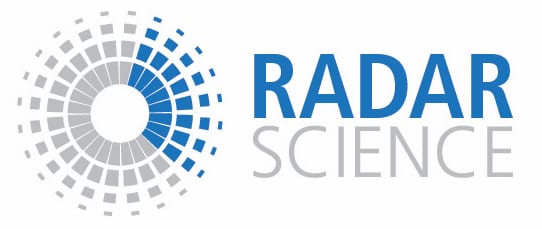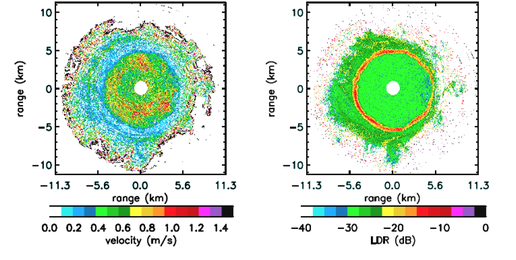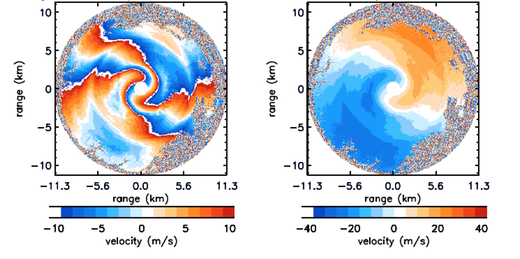The KASPR is the most sophisticated cloud radar ever build and the first of its kind in a US University. The KASPR will collect unique observations in clouds and precipitation and is expected to push our frontiers in basic knowledge in ice/snow microphysics and warm clouds lifecycle.
Key features of the KASPR system include:
• Liquid cooled RF unit resulting in excellent temperature stability and sealed RF unit.
• Dry air system to remove moisture from RF unit, antenna and pedestal.
• Conduction cooled, 2.2 kW peak power 5% duty cycle Extended Interaction Klystron Amplifier (EIKA).
• Low-loss latching circulator network with three receiver protectors to assure adequate receiver protection even with short circuit load on antenna port.
• Pulse-to-pulse switchable H and V-polarized transmit polarization.
• Dual-channel 16-bit digital receiver (Pentek 78661).
• Arbitrary waveform generator (ARB) capable of generating any user-defined waveform of up to 16K samples in length.
• Internal monitoring of transmit power, receiver gain and receiver noise figure stored with each data record.
• Two remote-control power distribution units (PDUs). One PDU is located in the shelter to control power to the pedestal, RF units, chillers and dehydrator; a second PDU is located in the RF unit to control power to all subsystems.
KASPR technical specifications:
| Radar Specification | Value |
| RF Output Frequency | 35.29 GHZ |
| Peak Transmit Power from EIKA | 2.2 kW typical (2.0 kW min.) |
| Transmitter Duty Cycle | 5% (1:20) is maximum. |
| Pulse Repetition Frequency (PRF) | staggered PRF: maximum 15 KHz |
| Pulse Widths (selectable) | 100 ns – 13000 ns |
| Pulse compression ratio | up to 60:1 |
| Range Resolution | 15 m – 200 m |
| Transmit Polarization | Pulse-to-pulse switchable H- and V-Polarization Linear |
| Receiver Polarizations | Simultaneous H and V-Polarization linear |
| LNA noise figure | 2.8 to 3.0 dB typical |
| IF output to digital receiver | 90 MHz |
| Digital receiver dynamic range | >80 dB for typical cloud radar bandwidths (10 MHz or less) |
| Antenna Diameter | 1.8 m |
| Antenna Gain | 53.3 dBi |
| Antenna Beamwidth | 0.32 degrees |
| Cross-polarization isolation | -25 dB min (-27 dB typical) |
| First side-lobe level | -19 dBi typical |
Available Operating Modes:
The following operating modes are available in KASPR.
1. Standard pulse pair
2. Staggered PRI pulse-pair
3. Polarimetric pulse-pair
4. Standard FFT mode
5. Polarimetric FFT mode
Polarimetric data products that will be available from KASPR include the following: reflectivity, mean velocity, spectral width, LDR, ZDR, differential phase, specific differential phase, co-polarized correlation coefficient, SNR. Example PPI data gathered with a fully-polarimetric Ka-band radar are shown in the following figures. This data was derived from a polarimetric pulse-pair sequence in which the transmit polarization pattern was: H, H, V, V, H with a non-uniform pulse-repetition interval (PRI).
The system software for the KASPR is designed to take full advantage of multi-processor PCs with the processing load distributed equally among all processors. The software performs a variety of data processing functions, including pulse compression, clutter filtering, continuously updated noise estimation, power spectra computation, (FFT) processing, spectral moment estimation (pulse pair or moment estimation from Doppler spectra) and calibrated dBZ computation. Data files are stored in a custom binary format. The main file header describes the setting of the radar. Within the data file, each processed data block has a block header containing information such as antenna azimuth and elevation; transmit power, receiver noise powers, temperatures of key components, etc. Separate data files are stored for raw I/Q data, power spectra, and spectra moments (dBZ, velocity and velocity standard deviation). Recording of each of these data file types can be turned on/off. For example, when scanning rapidly, it is normal to only record spectral moments to minimize the stored data volume.
The KASPR technical specifications are shown in Table 1.







